First Set of Projects Fast-tracked as Part of Governor’s Emergency Proclamation on Wildfire
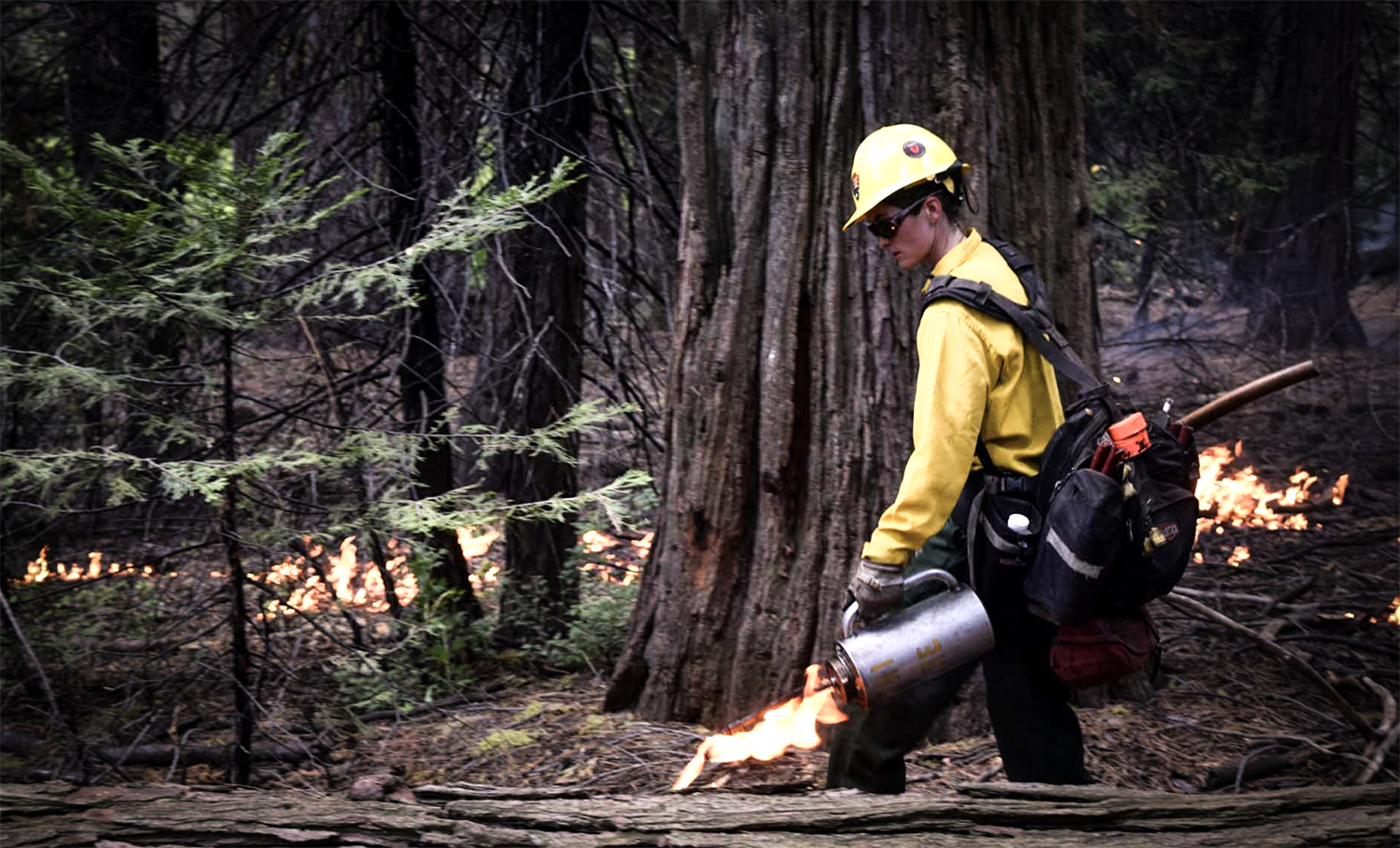
CNRA and CalEPA Identify First Set of Fast-tracked Projects as Part of Governor’s Emergency Proclamation on Wildfire
New Streamlined Process:
Governor Newsom issued an Emergency Proclamation (Proclamation) on March 1, 2025, to confront the severe ongoing risk of catastrophic wildfires that threatens public safety across California. The Proclamation authorizes the Secretaries of the California Natural Resources Agency (CNRA) and the California Environmental Protection Agency (CalEPA) to determine which projects are eligible for suspension of certain State of California statutory and regulatory requirements to expedite critical fuels reduction projects, while at the same time protecting public resources and the environment. The Task Force has established a website that includes eligibility criteria, FAQs, and a link to the application to request a determination of eligibility for suspension of relevant State of California statutory and regulatory requirements. The Secretaries also hosted a virtual briefing on the Proclamation and the process.
First Set of Approved Projects:
Just one week after applications opened, CNRA and CalEPA identified a 450-acre collaborative wildfire resilience project in Humboldt County as the first project to be determined eligible for streamlining. Three projects totaling 882 acres have been approved to date, spanning from the northern California coast to Sierra Nevada Mountains and all the way down to San Diego. Each of these projects involve tribes and other partners, natural resource managers and fire districts. Here is an overview of the first set of approved projects.
- The Prosper Ridge Community Wildfire Resilience Project in Humboldt County is the first approved project under the Governor’s emergency proclamation on wildfire. This collaborative state, federal, and tribal project will treat nearly 450 acres with a combination of mechanical thinning, manual treatments, and prescribed fire.
- The Sycuan Wildfire Resiliency Project covers over 240 acres in San Diego County and aims to protect the Sycuan Reservation from wildfire by reducing fire hazard, ensuring defensible space, and providing safe egress with the use of 300 grazing goats.
- Vedanta Hazardous Fuels Reduction Project will reduce wildfire risk, improve forest health and enhance landscape resilience within the WUI, reducing risk of crown fires spans across 190 acres near Lake Tahoe.
These projects are focused on removing flammable dead or dying trees, creating strategic fuel breaks, creating safe egress along roadways, manual and mechanical removal of ladder fuels and beneficial fire use. Approved project location maps and documentation will be made available on the Task Force website.
Rancheria Celebrates Achievement as the State’s 1,000th Firewise Community
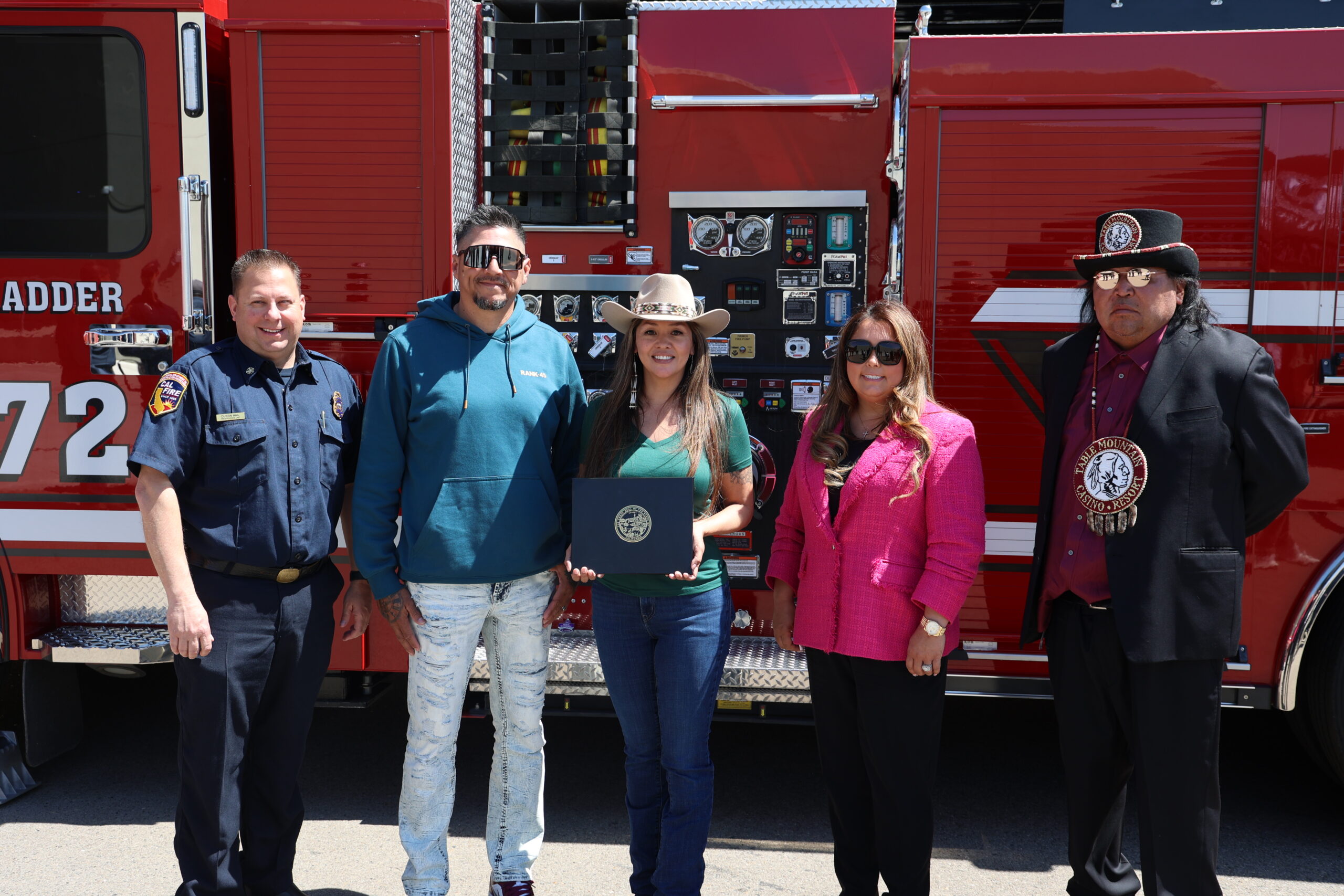
Table Mountain Rancheria Celebrates Achievement as the State’s 1,000th Firewise Community During Wildfire Preparedness Week
Table Mountain Rancheria, located in Fresno County, has been announced as the 1,000th Firewise USA® community in the state during this year’s Wildfire Preparedness Week celebration. This recognition by the National Fire Protection Association® (NFPA®) highlights the commitment the community has taken to ensure that wildfire risk is reduced and that residents are prepared. Governor Newsom declared May 4-10 as “Wildfire Preparedness Week” with the theme, “Building a Fire-Ready Future: Strengthening Our Defenses, Together,” to emphasize the importance of both collaborative efforts and individual responsibility in reducing and managing wildfire risk. CAL FIRE’s readyforwildfire.org website hosts an array of preparedness resources.
Governor Newsom Signs Executive Order to Further Improve Community Hardening
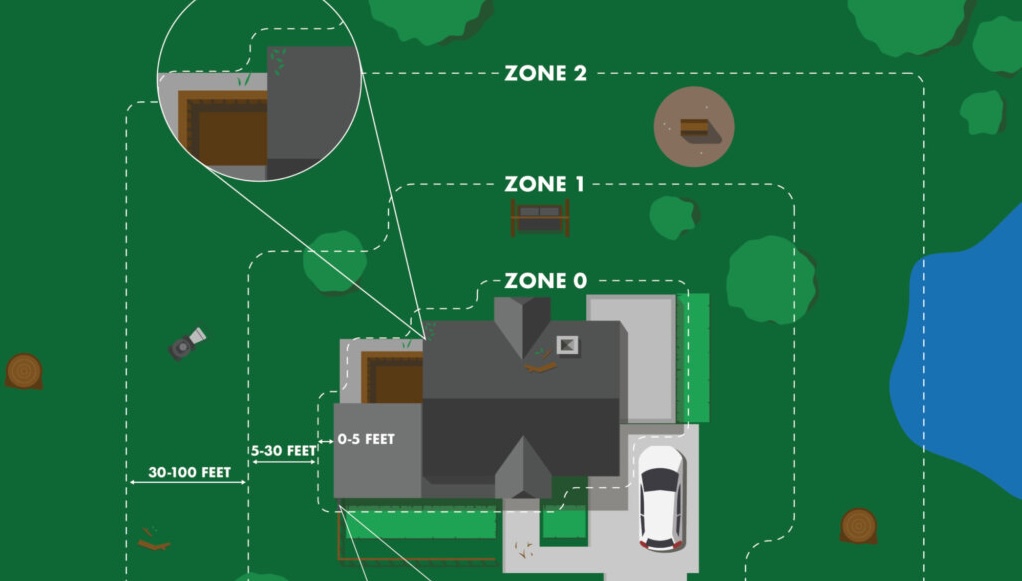
Governor Newsom Signs Executive Order to Further Improve Community Hardening and Wildfire Mitigation
On February 6, Governor Newsom signed an executive order to launch key initiatives to continue adapting to future wildfires and strengthen community resilience to urban conflagration (large destructive fires that spread beyond natural or artificial barriers wherein structures themselves become the fuel that spreads the fire). The executive order:
- Directs the State Board of Forestry to accelerate its work to adopt regulations known as “Zone 0,” which will require an ember-resistant zone within 5 feet of structures located in the highest fire severity zones in the state.
- Tasks the Office of the State Fire Marshal with releasing updated Fire Hazard Severity Zone maps for areas under local government responsibility, adding 1.4 million new acres of land into the two higher tiers of fire severity, which will update building and local planning requirements for these communities statewide.
- Requires CAL FIRE and Cal OES to work with local, federal and tribal partners on improvements to the Federal resource ordering system for wildfire response.
California Continues Quick and Effective Action to Assist Los Angeles Fires Recovery
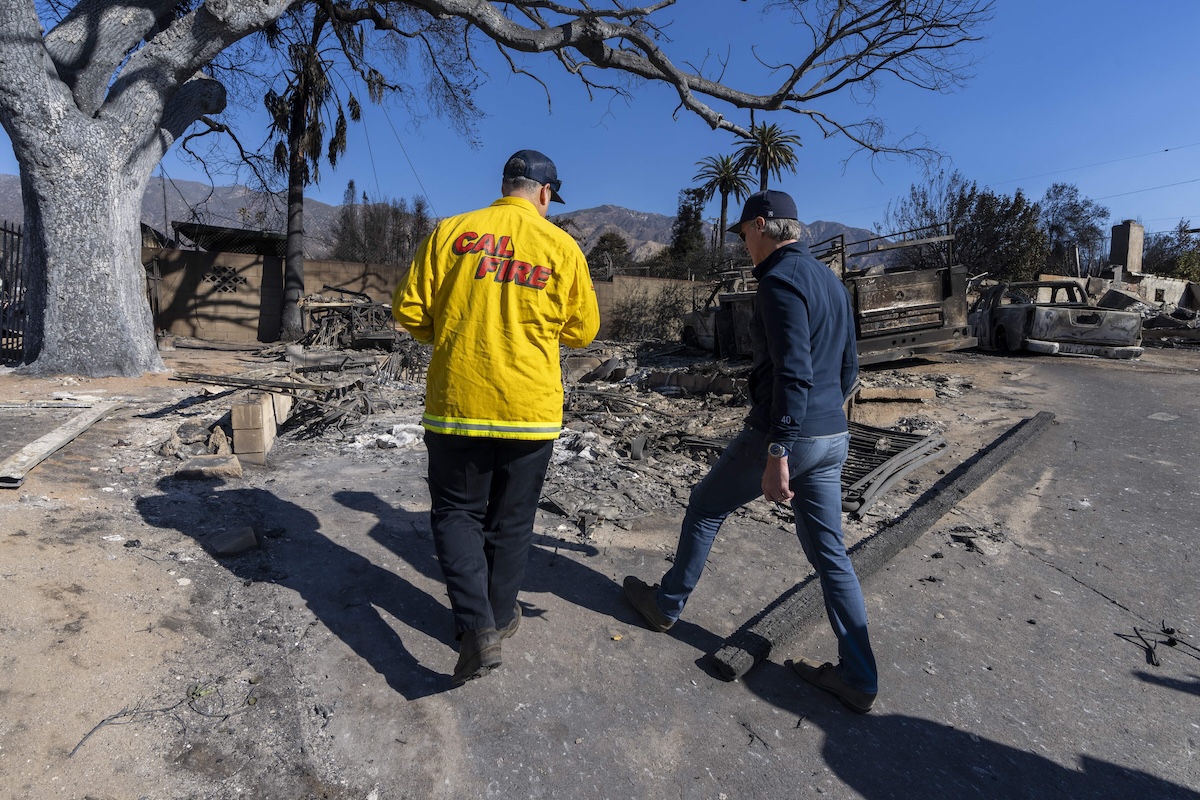
California Continues Quick and Effective Action to Assist Los Angeles Fires Recovery
February 7, 2025 – Governor Newsom has launched historic recovery and rebuilding efforts to accelerate recovery and signed legislation providing over $2.5 billion to support ongoing response and jumpstart recovery efforts for Los Angeles. The Governor has signed 15 executive orders that together are:
- streamlining rebuilding of homes and businesses;
- cutting red tape and suspending permitting requirements under the California Coastal Act;
- removing bureaucratic barriers to provide critical regulatory relief to help fire survivors rebuild, and access essential services;
- providing tax and mortgage relief to impacted communities and businesses, as well as extending tax deadlines;
- fast-tracking temporary housing and protecting tenants; and
- mobilizing debris removal and cleanup and protecting communities from flooding and landslides.
Additionally, State and federal resources have come together to accelerate a safe recovery for Los Angeles:
- The California Conservation Corps (CCC) responded quickly in recovery efforts by installing silt socks and straw wattles around storm drains in the burn zones to keep contaminants found in the ash from washing into the Los Angeles watershed. This was the largest deployment of Corpsmembers in CCC history targeting erosion and contaminant control.
- The California Department of Water Resources deployed over 30 watershed experts and engineers to Los Angeles to support fire mitigation work in burn scar areas and protect downstream communities by keeping toxic runoff out of local watersheds.
- The California Department of Conservation deployed its Watershed Emergency Response Teams to the front lines to quickly assess post fire hazards such as debris flows, flash floods, and falling rocks.
- The California Department of Fish and Wildlife (CDFW) is supporting intake of burned and impacted wildlife to rehabilitation centers, as well as relocating wildlife to help expedite recovery for both people and animals. CDFW also mobilized staff and volunteers to rescue a population of endangered Steelhead trout in Topanga Creek.
- California State Parks is working with US EPA, Cal OES, and CalEPA to help the recovery effort by hosting two temporary sites to safely process hazardous household materials removed from properties destroyed by the Palisades Fire.
- The U.S. Forest Service continues ongoing assessment of damage from the Eaton and Hughes fires through the deployment of Burned Area Emergency Response (BAER) Teams. These teams include scientists, historians and other subject matter experts that identify potential emergency threats on federal lands, such as human life and safety, national forest property, critical natural resources, and critical pre-historic and historic properties, and more. In addition, BAER Teams coordinate with other agencies, who assist businesses, homes and landowners preparing for rain events and potential flooding and debris flow in fire affected areas.
- The Bureau of Land Management (BLM) is currently engaging in emergency stabilization and rehabilitation (ESR) planning following the Border 2 Fire to mitigate the potential impacts of the burned area, such as mud and debris flows, erosion, and other damages. Additionally, BLM assessed impacts of the Hughes Fire and no emergency stabilization or rehabilitation needs were identified.
Managing Wildfire Risk in Southern California’s Chaparral Landscapes
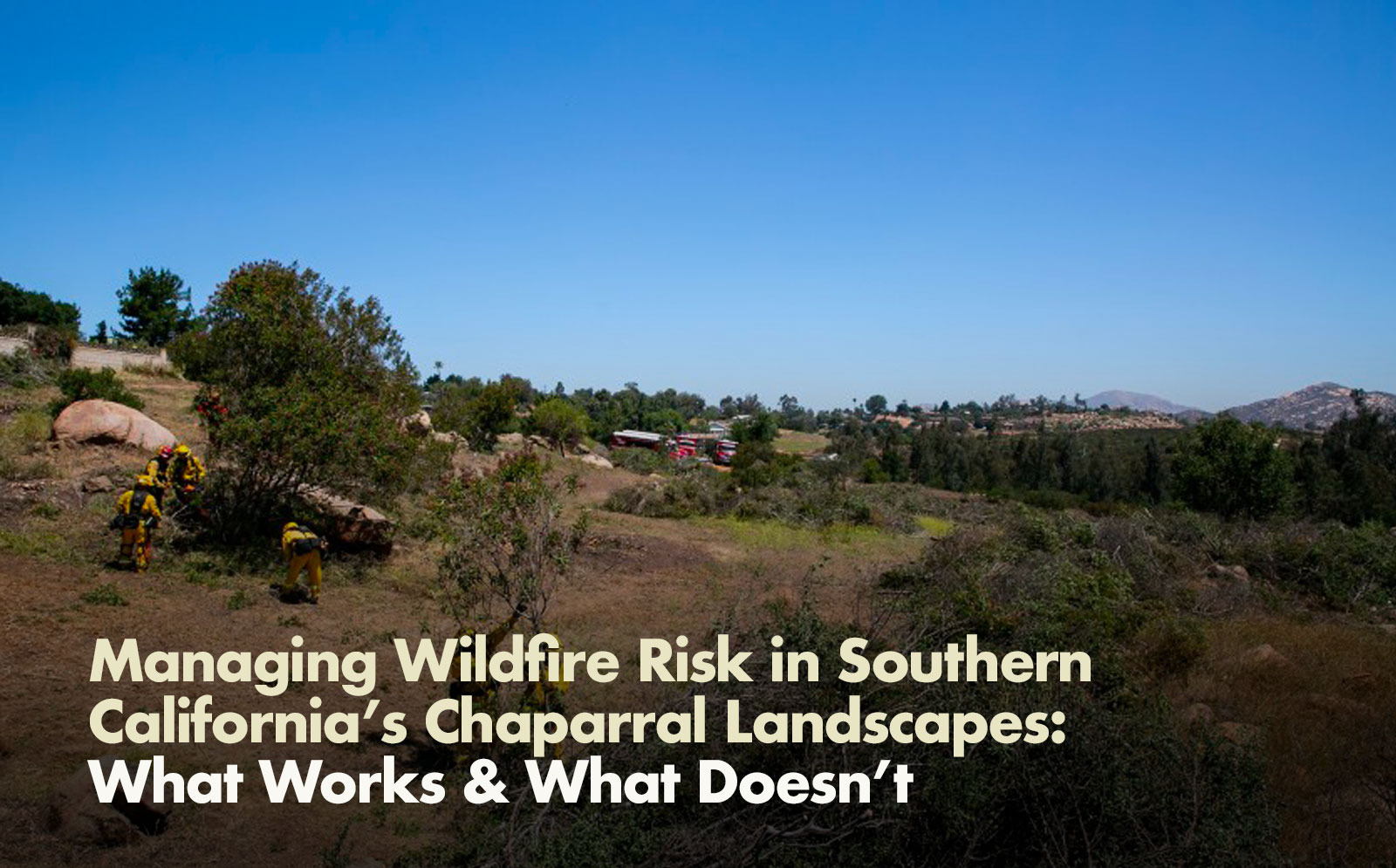
THE PROBLEM: The largest and most catastrophic wildfires in Southern California strike during Santa Ana winds, when extremely dry conditions combine with high winds and ignitions along roadways and powerlines. Climate change has made these conditions more extreme and more likely, and the recent Los Angeles fires are among the most damaging natural disasters in the state’s history.
SOUTHERN CALIFORNIA IS UNIQUE: Southern California’s chaparral landscapes require carefully tailored management approaches for wildfire resilience. Unlike much of California’s forests (including Southern California’s higher elevation forests), Southern California’s chaparral-dominated ecosystems suffer from too much fire. Therefore, fuel treatments such as prescribed fire are generally not appropriate as a landscape-level tool to reduce wildfire risks as more frequent fires lead to the conversion of chaparral into more flammable non-native grasses, which creates even greater fire risk. Accordingly, primary wildfire resilience tools in Southern California communities near chaparral are preventing ignitions; hardening structures and communities; and strategic fuel breaks.
PROGRESS MADE: The State and its partners have completed more than 500 targeted wildfire resilience projects between 2021 and 2023, including 129 in Los Angeles County. These include fuel breaks, roadway ignition reduction projects, and a broad range of community wildfire resilience programs and projects.
Irvine Ranch Conservancy President & CEO, Michael O’Connell, shares the unique obstacles and solutions to wildfire risk in Southern California during a panel on the Los Angeles fires featured through the California Natural Resources Agency’s Secretary Speaker Series.
What Works
1.
IGNITION REDUCTION:
Ignition reduction work focuses on reducing the potential sources of ignition and removing fuels in areas where ignitions are more common. Undergrounding of utility lines and restricting access to unauthorized trails are examples of reducing potential ignition sources. Where ignitions are more common, such as along roadsides, removing easily ignitable fuels, such as non-native grasses, can reduce the likelihood of an ignition becoming a wildfire. Individuals can take steps to prevent human ignitions through actions such as mowing dry grass before 10 a.m., ensuring debris burns and campfires are completely extinguished, and ensuring vehicles are properly maintained.
WHAT WE'RE DOING:
The U.S. Forest Service (USFS) - along with Caltrans, CAL FIRE, DOC, and non-profit partners – created the Southern California Ignition Reduction Program to coordinate and ramp up regionally-tailored ignition reduction efforts. CAL FIRE and its contract counties completed over 29,800 acres of fuels reduction work across 391 projects in the 2023/24 fiscal year. Caltrans treated over 134,000 acres along roadsides between 2021 and 2023 in Southern California. The California Office of Energy Infrastructure Safety ensures electrical corporations are constructing, maintaining, and operating electrical lines and equipment to minimize wildfire risk through review of Wildfire Mitigation Plans.

2.
STRUCTURE HARDENING:
Once a fire starts, pre-fire work to create defensible space and harden structures, especially removing flammable materials from Zone Zero (within 5 feet of structures) and installing low-cost protections like ember-resistant vents, offers the best chance to reduce risk to homes near the flame front.
WHAT WE'RE DOING:
Governor Newsom signed Executive Order N-18-25 which directs the State Board of Forestry to accelerate its work to adopt Zone Zero regulations. CAL FIRE inspected over 216,000 homes in Southern California in the 2023/24 fiscal year. CAL FIRE and Cal OES partnered through the California Wildfire Mitigation Program to develop a home hardening initiative to retrofit, harden, and create defensible space for homes at high risk to wildfires, focusing on high socially-vulnerable communities.
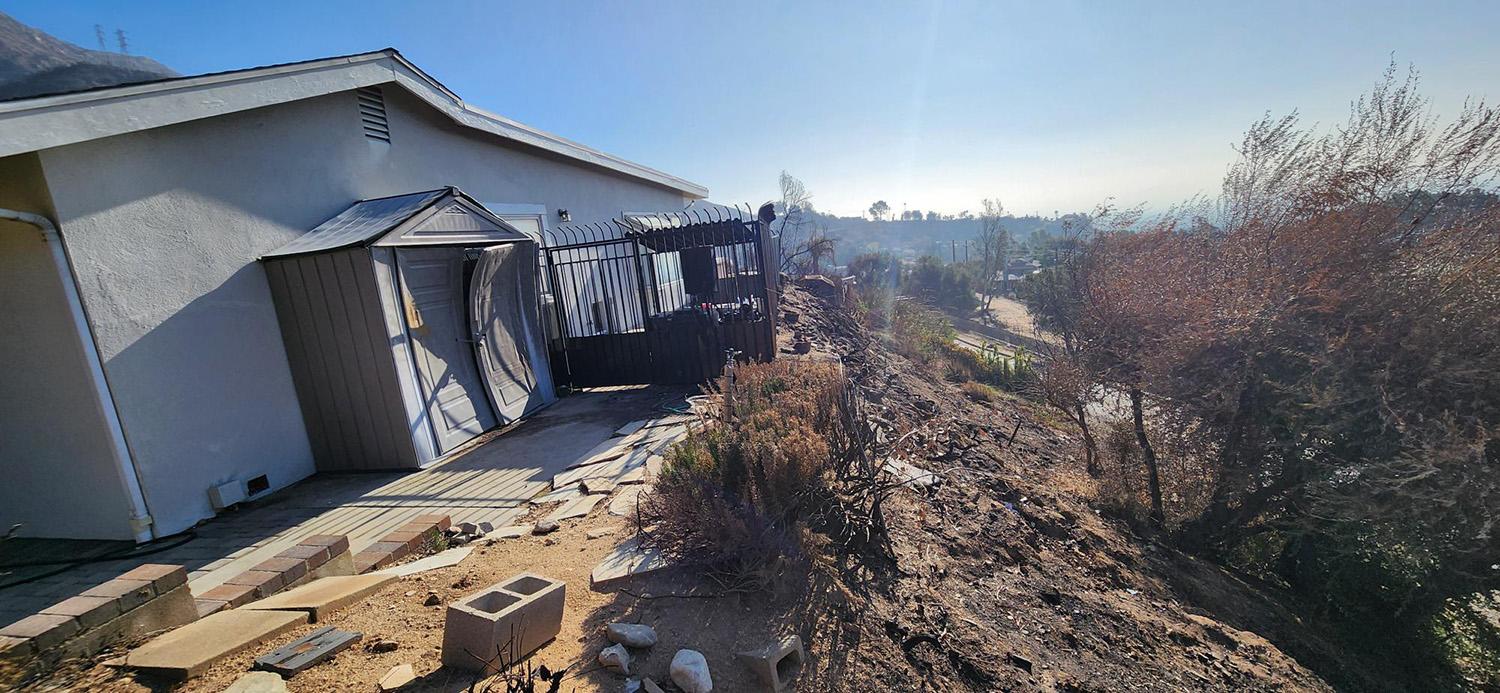
– Steve Hawks, Senior Director for Wildfire at the Insurance Institute for Business & Home Safety
3.
STRATEGIC FUEL BREAKS:
When placed strategically and properly maintained, fuel breaks can reduce fire risk and enable firefighters to protect communities safely and effectively. Three key factors – fire weather, strategic placement, and continued maintenance – determine fuel break effectiveness.
WHAT WE'RE DOING:
CAL FIRE Provides funding through competitive grants to communities across the state to create and maintain fuel breaks and conduct other mitigation and efforts. CAL FIRE continues to evaluate the effectiveness of fuel treatments (viewable in an interactive dashboard) that have been impacted by wildfire to ensure projects are achieving intended objectives and to inform management decisions. A selection of Fuels Treatment Effectiveness Reports from 2024 are viewable here. USFS has treated more than 50,000 acres for hazardous fuels in Southern California since 2023. This includes fuel breaks that enabled firefighters to protect the communities of Lake Elsinore from the 2024 Airport Fire and Angelus Oaks from the 2024 Line Fire. The Bureau of Land Management is utilizing cross-boundary strategic fuel breaks to protect vulnerable communities from wildfire. This includes fuel breaks that helped firefighters contain the 2024 Grove 2 Fire in San Diego County.
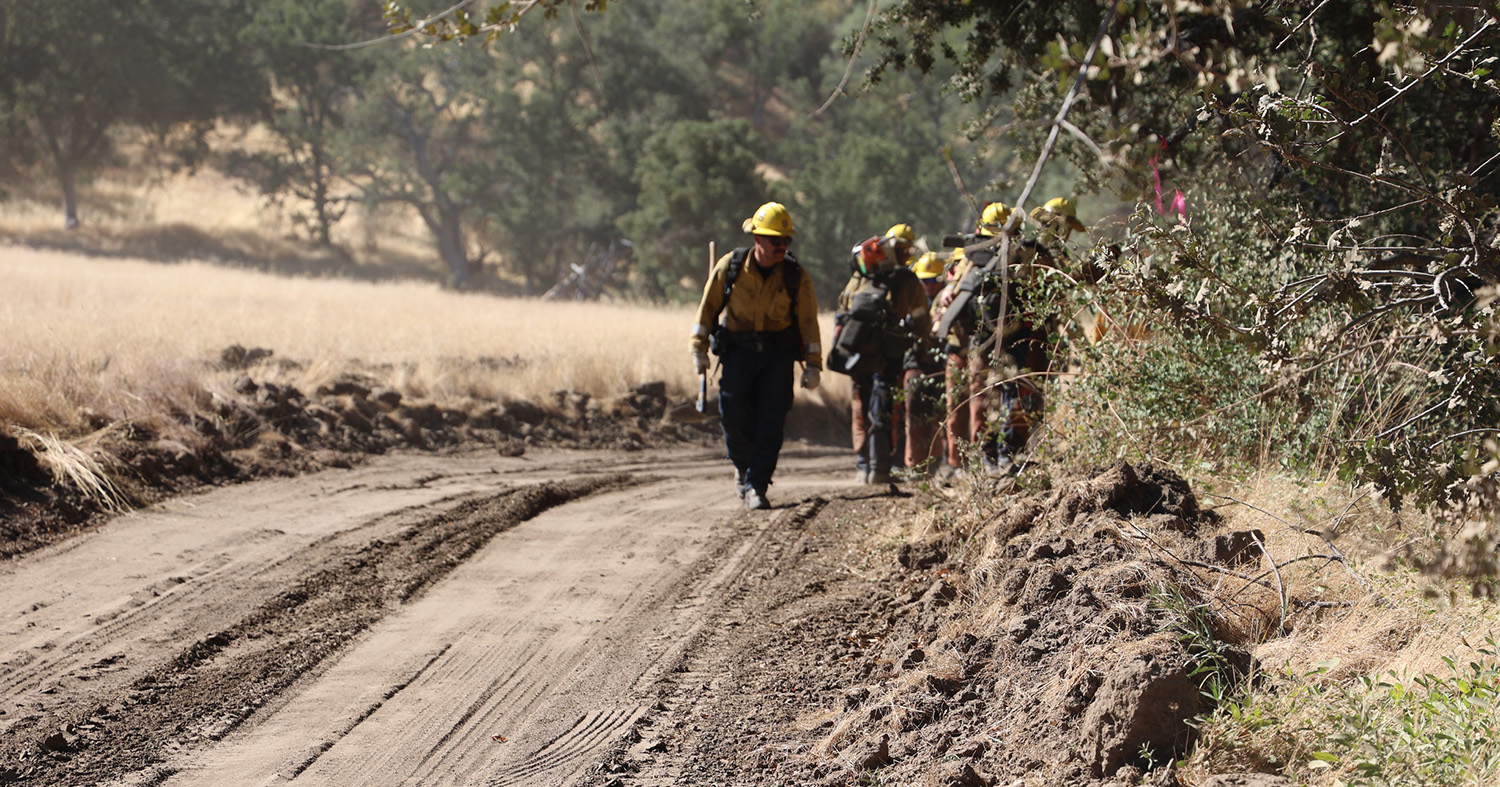
“Fuel breaks are somewhat controversial, because there is a net ecological loss when you create them, but they are beneficial when they are strategically placed. “
– Megan Jennings, Research Ecologist at San Diego State University
What Doesn't Work
1.
WIDESPREAD BRUSH CLEARING:
In the absence of extreme wind, strategically-based fuel breaks can be highly effective at reducing fire risk, but more widespread chaparral clearing can also cause damage by completely removing native vegetation, impacting habitat and increasing the risk of spreading more flammable non-native species, which can also indirectly increase fire risk.
– Max Moritz, Wildfire Specialist at UC Santa Barbara
– Patrick T. Brown, The Breakthrough Institute
2.
FUEL BREAKS UNDER EXTREME WEATHER CONDITIONS:
Under extreme fire weather conditions, such as the recent Santa Ana winds during the Los Angeles fires, fuel breaks, and other fuel reduction projects, play a smaller role in reducing fire spread as wind carries embers well in front of the active flame front.
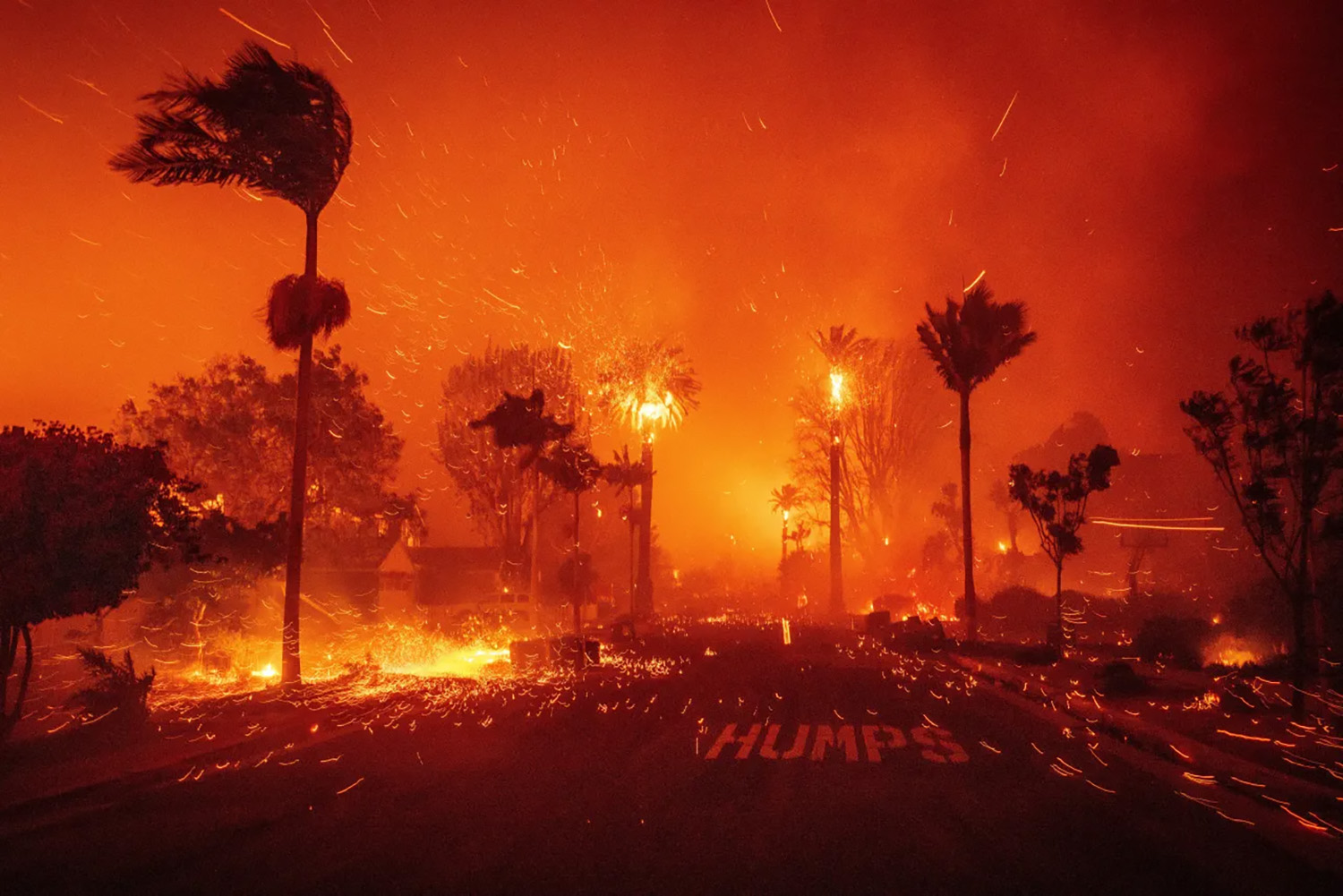
– Chief Brian Fennessy, Orange County Fire Authority
– Alexandra Syphard, Senior Research Ecologist with The Conservation Biology Institute
3.
UNMAINTAINED FUEL BREAKS:
Unmaintained fuel breaks and disused roads create places for flammable non-native grasses to thrive, which increases ignition risks. One-time treatments and unmaintained fuel breaks can have the unintended effect of actually increasing fire risk.
“Unmaintained fuel breaks can slow fire suppression response and put firefighters at risk, therefore there should be a commitment and plan to maintain a strategic fuel break network across Southern California.”
– Nicole Molinari, Southern California Province Ecologist, U.S. Forest Service
4.
PRESCRIBED FIRE IN CHAPARRAL LANDSCAPES:
Unlike many other parts of California, prescribed and managed wildfire in Southern California chaparral is not a widespread solution because fires are occurring MORE frequently than they did historically. Too much fire is leading to conversion of native vegetation to more flammable non-native grasses, resulting in even greater fire risk. However, prescribed fire can be an effective tool in Southern California’s montane forests and in other targeted applications in the region.
“In our shrublands we have too much fire, and we want to have less. Too much fire means shrublands turn to grasslands.”
– Megan Jennings, Research Ecologist at San Diego State University
Resources:
*Information included in this document was sourced from the California Wildfire and Forest Resilience Task Force’s Southern California Regional Profile.
Find practical ways to protect your home from wildfire: Defensible Space | CAL FIRE
USDA California Climate Hub Provides Forestry Resource Repository for Land Managers
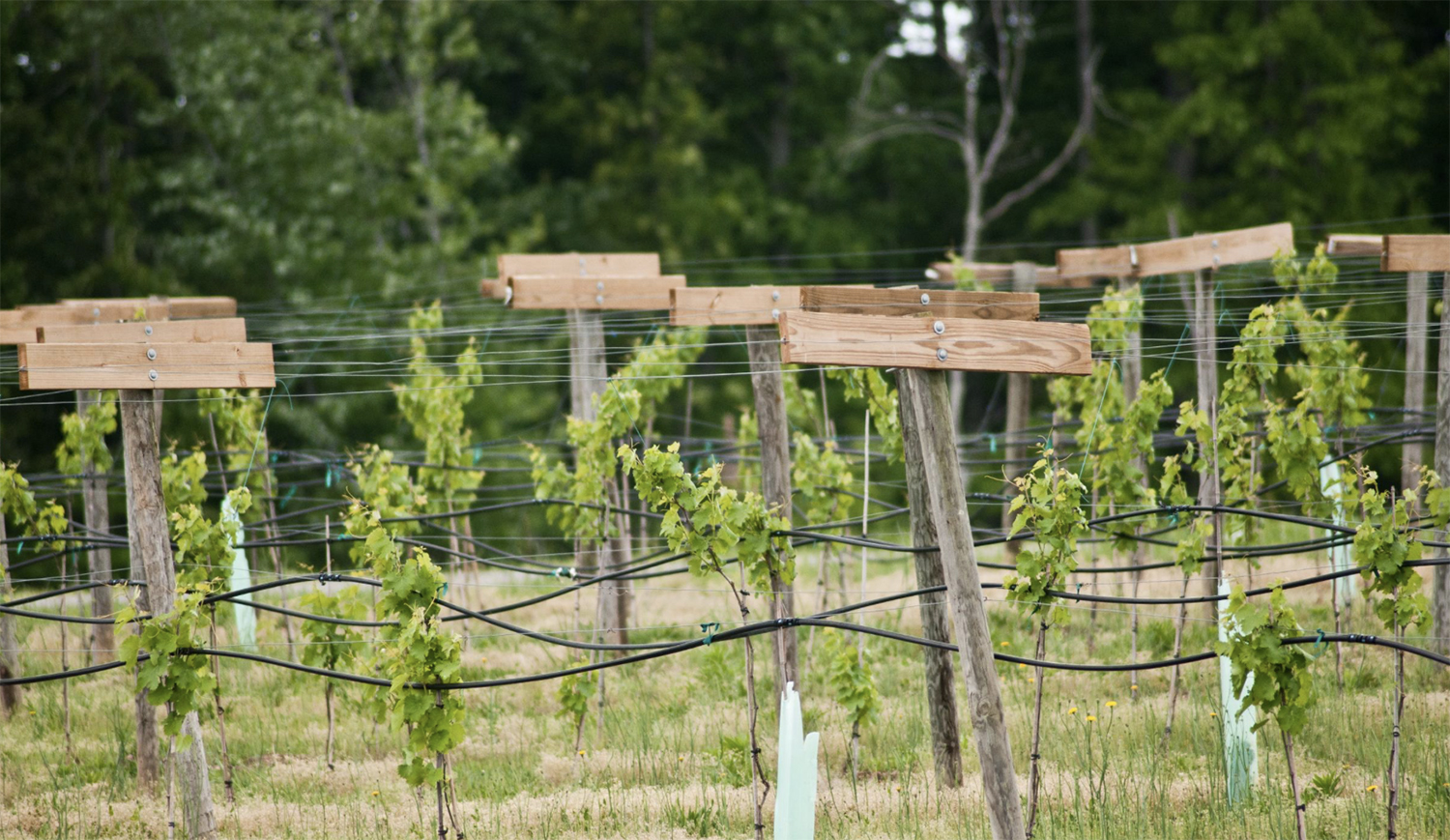
New Website Provides Forestry Resource Repository for Land Managers
January 8, 2025 – The USDA California Climate Hub released a new webpage that compiles datasets and decision-support tools to help land managers and natural resource professionals with assessing the conditions of a landscape for project planning. The list is not exhaustive of all resources but focuses on data and tools available to the public, with an emphasis on resources available within the state of California. The repository also contains a series of factsheets, produced by the USDA California Climate Hub, that offer a succinct overview of the California Wildfire and Forest Resilience Task Force’s Regional Resource Kits and its constituent products.
Survey Open to Collect Input from Landowners on Prescribed Burning
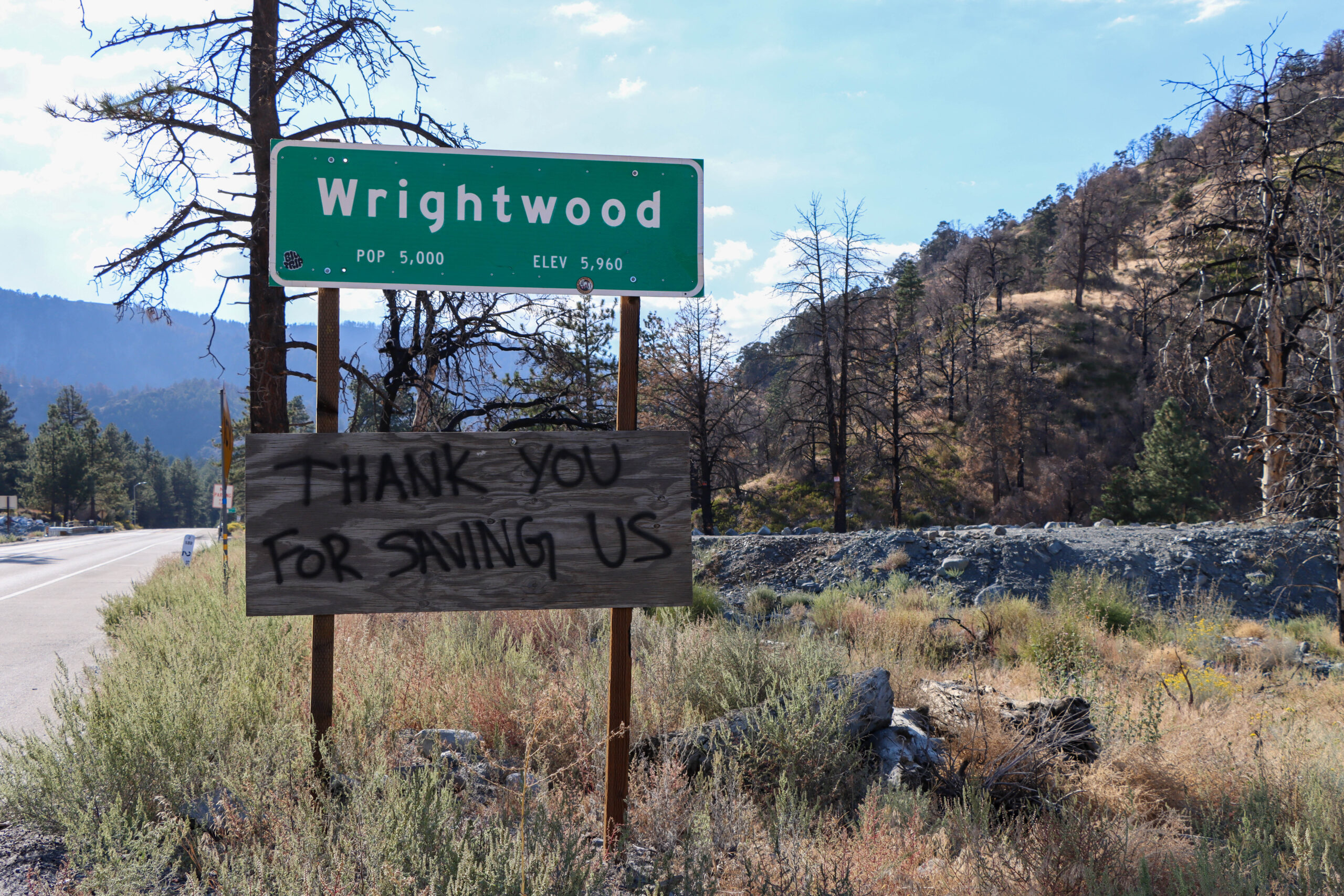
Survey Open to Collect Input from Landowners on Prescribed Burning
In collaboration with the University of California Cooperative Extension, Pennsylvania State University is conducting a survey to better understand private landowner perspectives and potential intentions to use planned burning in California. The objectives of this project are to:
•Evaluate private forest landowners’ attitudes towards prescribed fire in California.
•Identify barriers and opportunities for prescribed fire adoption in the state.
•Develop tailored support strategies for California landowners.
•Assess the influence of policy and environmental factors on prescribed fire use in California.
U.S. Forest Service Thinning Projects Protect Southern California Communities

U.S. Forest Service Thinning Projects Protect Southern California Communities
November 13, 2024 – Two of this year’s larger fires in Southern California, the Line Fire and the Bridge Fire, demonstrated how fuels treatments protect communities and natural landscapes. The Line Fire was fueled by high winds and steep terrain and quickly spread toward the community of Angelus Oaks. Luckily for firefighters defending Angelus Oaks, previous wildfire mitigation work in San Bernardino National Forest, including prescribed fire and mechanical thinning, enabled firefighters to suppress the wildfire before it was able to burn through Angelus Oaks.
A few days later, the Bridge Fire was heading toward the community of Wrightwood but first hit Forest Service fuel breaks, where trees had been thinned out five years prior. When the fire reached the fuel breaks, fire behavior altered, slowed, and allowed firefighters to contain the blazes before the fire could reach the 5,000 residents of Wrightwood. These success stories on the importance of preventive treatments build on effectiveness reporting by CAL FIRE and other Task Force partners that are doing the proactive work to protect landscapes and communities before wildfire strikes.
State Coastal Conservancy Awards Nearly $6 Million For Wildfire Resilience Projects
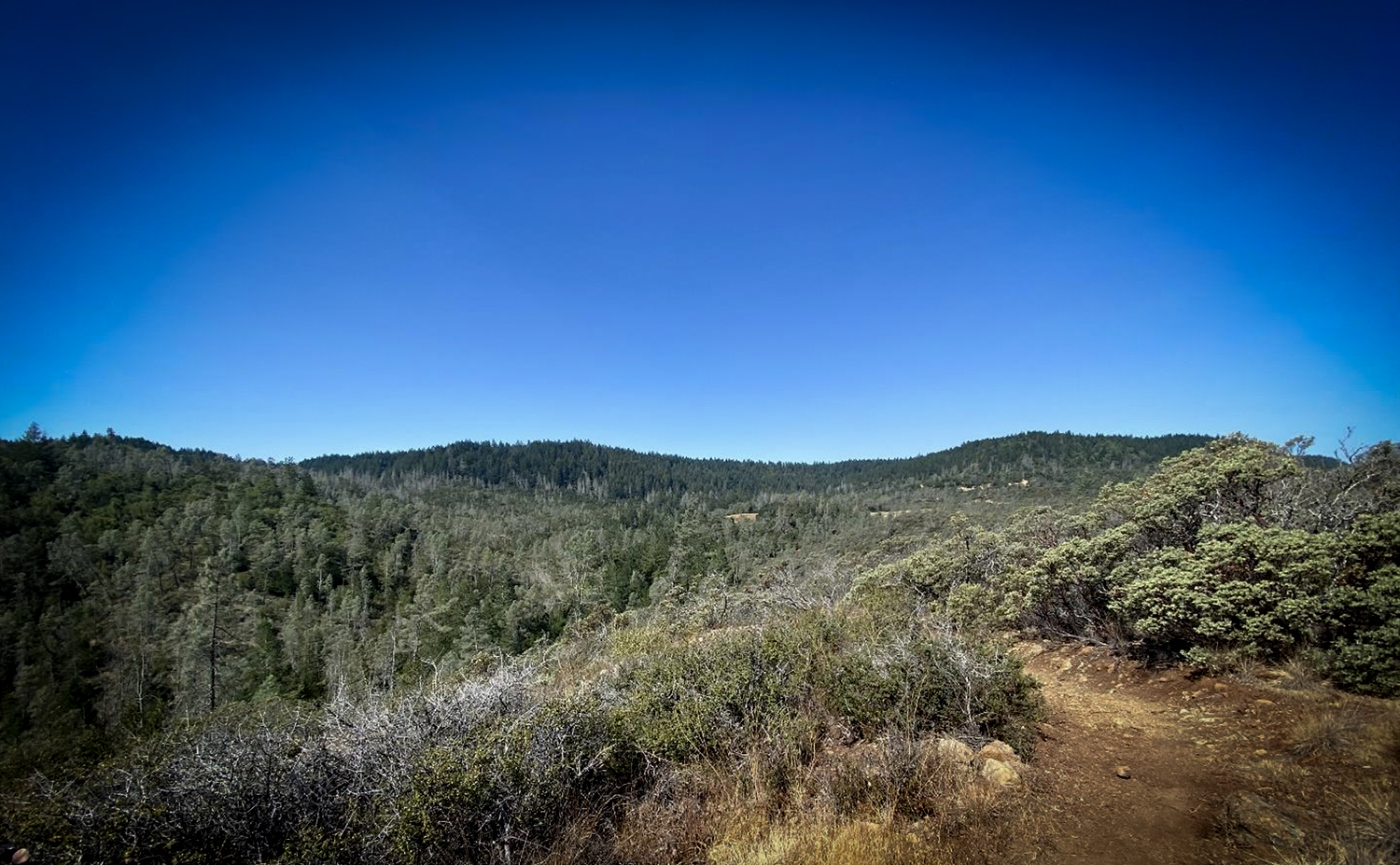
State Coastal Conservancy Awards Nearly $6 Million For Wildfire Resilience Projects
- $250,000 to support Civicorps’ East Bay Wildfire Risk Reduction project for workforce development and vegetation removal in Alameda and Contra Costa Counties.
- $1,542,000 for the San Mateo County Critical Evacuation Corridors Wildfire Resilience Project to remove hazardous vegetation along two critical road evacuation corridors.
- $500,000 to implement the Garland Ranch Wildfire Resilience Project to thin 12 acres of eucalyptus trees and create a 6.2 acre shaded fuel break, maintain previously treated areas, collect data, and conduct community engagement in Monterey County.
- $1,626,000 to the U.S. Forest Service to treat approximately 24 miles of historic fuel breaks by removing vegetation along the Santa Lucia ridge line within the Los Padres National Forest to protect neighboring communities in Monterey County from catastrophic wildfire.
- $947,850 for Santa Barbara’s Wildfire Resilience Project to reduce wildland vegetation fuels acres, restore native species, and conduct community engagement.
- $1,131,700 for the Ascot Hills Resilience Project in Los Angeles to enhance 33 acres of habitat through the removal of invasive plants and planting of native plants to increase wildfire resilience.
RESOURCES
Federal Funds Reduce Wildfire Risk and Support Local Economies
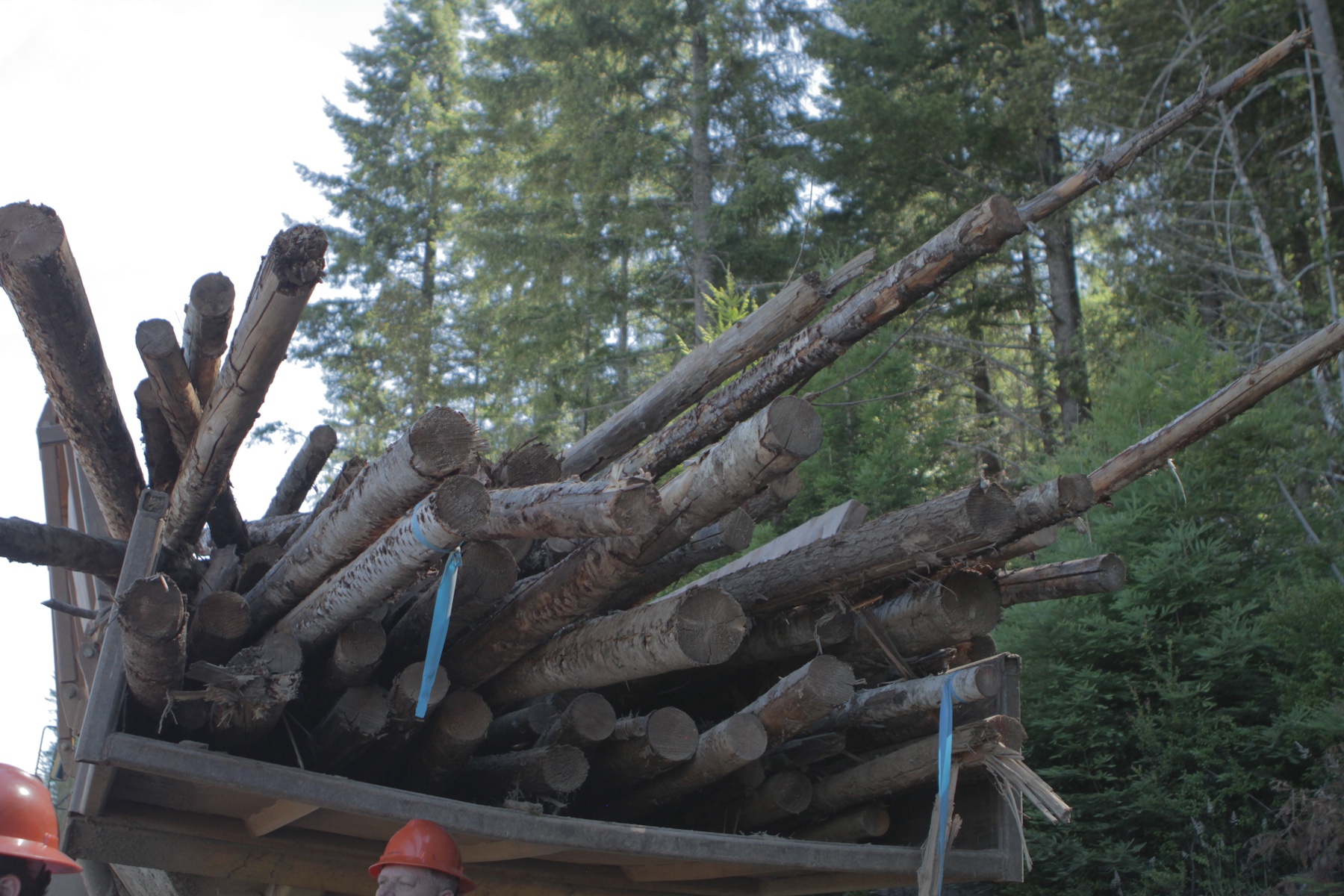
Federal Funds Reduce Wildfire Risk and Support Local Economies
Federal Funds Support Wildfire Impacted Communities:
November 15, 2024 – Governor Newsom announced that five communities hit hardest by the devastating wildfires in 2018 will receive $40.7 million in new federal aid to support community development and help communities reach full economic recovery. This funding will reach communities that are still recovering from the economic and mental health impacts of wildfires and demonstrates the importance of continued support for disaster-impacted communities, even years after initial disaster relief has concluded. The funding comes from the federal 2018 Community Development Block Grant—Disaster Recovery Workforce Development program and will go to communities in the counties of Butte, Lake, Los Angeles, Shasta, and Ventura.
USFS Awards Over $7 Million to Reduce Wildfire Risk and Support Local Economies in California:
November 13, 2024 – The U.S. Forest Service awarded $20 million to transport hazardous fuels from forests to facilities for processing into wood products or energy sources. These awards fund 66 projects in 13 states, including nearly $7.3 million for 12 projects in California. Awarded projects will increase the pace and scale of wildfire resilience treatments and provide economic benefits to local communities and businesses. Projects will support critical wood products industries and underserved communities by providing jobs in rural areas that may be impacted by mill closures.
